Ebenezer Lathrop’s company of militia which marched from Norwich, Connecticut, to Stillwater, New York, in the autumn of 1777 makes an excellent case study to understand Connecticut’s militia forces in the middle of the American War of Independence. When Connecticut raised companies that Fall to serve with Gen. Horatio Gates’s army, most were formed by an amalgamation of men from across regiments. The town of Norwich, on the other hand, hybridized a company solely from the ranks of the 20th Militia Regiment for service with Col. Jonathan Latimer’s Battalion of Militia. As the 20th only encompassed Norwich, the sources required to study Lathrop’s Company are concentrated. Additionally, nearly one-third of the company ultimately applied for pensions, and at least two privates left campaign diaries, giving us rich insight into the company’s activities. These sources, combined with demographic and economic data, illustrate the economic and political dimensions of Norwich and its militiamen during the Revolutionary War.
Norwich of the 1770s and its Militia Structure
In 1774 Norwich was the second most populus town in the colony, with 7,321 inhabitants residing across eight ecclesiastical societies.[1] While no single outlying society made up a majority of the town’s population. almost 60 percent of residents in lived outside of the central Norwichtown and Chelsea societies.[2] This is even clearer when viewing the societies as combined into towns: West Farms and Pautipaug (Franklin) made up 18.13 percent of Norwich’s population while Newent and Hanover societies (Lisbon) made up 13.76 percent. Long Society (Preston) contained 15.03 percent of Norwich’s citizenry and finally New-Concord (Bozrah) held another 12.73 percent.[3] While central Norwich was densely populated, most residents were spread out among its outlying communities. This distribution was reflected in the number of militia companies at the beginning of the war. Only Norwichtown and Long Society had two companies, all others each had one regardless of their population size. Long Society was an exception due to its extended geography.[4]
| Society | Population in 1774 | Percent of Total Population |
| Norwichtown | 1,978 | 27.02% |
| West Farms | 875 | 11.95% |
| Newent | 641 | 8.76% |
| Long Society | 1100 | 15.03% |
| New Concord | 932 | 12.73% |
| Chelsea | 1019 | 13.92% |
| Hanover | 323 | 4.41% |
| Pautipaug | 453 | 6.18% |
| Total: | 7321 | 100% |
Table 1: Norwich’s Population by Ecclesiastical Society in 1774.[5]
Norwich’s militia originated with the town’s founding in 1659 when the first “train-band” was organized as part of the New London County Regiment.[6] By 1739, when Connecticut’s militia was reorganized into numbered regiments, the town had added an additional six infantry companies and one of cavalry. As the threat of hostilities loomed in 1774, Connecticut further reorganized its militia. Norwich’s companies were split from the 3rd Regiment and formed into the 20th Regiment; one of only a few regiments in the state to encompass a single town. Norwich’s companies kept their numbering through all these reorganizations; the 3rd Company raised in 1719 was the same 3rd Company in 1775, as consolidations saw higher numbered companies merged into the lower numbered companies.[7]
Aside from the ten infantry companies which existed during the Revolution, the 20th Regiment also had three “volunteer” companies whose recruitment pools reached across ecclesiastical society bounds.[8] These were the Norwich Light Infantry, Veteran Guards, and a Matross company. The Light Infantry recruited mostly from Norwichtown, Newent, and Long Society while the Veteran Guards recruited mostly from New-Concord and West Farms.[9] Without muster rolls, it is impossible to determine the Matross company’s recruitment patterns. Additionally, the 2nd Regiment of Light Horse recruited a troop within Norwich. Of the thirteen men of that troop who campaigned in 1776, seven were West Farmers, while their captain, Andrew Lathrop, hailed from New Concord.[10] The war also saw the addition of Alarm List companies of militia exempts attached to the infantry companies for local defense.[11] Finally, in August 1775 the Council of Safety ordered a quarter of the 20th Regiment to be “draw[n] off and enroll[ed]” as minute men.[12] Norwich supported the entire gamut of militia formations present in the state during the Revolution.
| Company | Society | Town(s) Today |
| 1 | 1st Society | Norwich |
| 2 | 1st Society | Norwich |
| 3 | West Farms | Franklin |
| 4 | Newent | Lisbon, Sprague |
| 5 | Long Society | Norwich, Preston |
| 6 | New Concord | Bozrah |
| 7 | Pautipaug | Franklin; Sprague |
| 8 | Long Society | Griswold |
| 9 | Chelsea | Norwich |
| 10 | Hanover | Sprague |
| Veteran Guards | New Concord;
West Farms |
Bozrah;
Franklin |
| Light Infantry | Most of “Ancient” Norwich | Bozrah, Franklin, Griswold, Lisbon, Norwich, Sprague, Preston |
| Matross | ||
| 3rd Company, 2nd Regiment of Light Horse |
West Farms,
New Concord |
Franklin; Bozrah |
Table 2: Norwich’s Militia Organization in 1775
While most white men aged sixteen and fifty were eligible for militia service, Norwich’s 158 Black and Indigenous men, free and enslaved, were barred from the militia.[13] Connecticut’s militia was a white institution and the state government argued, by exempting black and native men, that they were outsiders to the community and had no role in collective defense. Other exemptions rewarded white men who had been on campaign or prevented governance from falling apart; the government avoided punishing men for non-appearance due to factors outside their own control. Those exemptions were fundamentally different from the racial exclusion that worked to cement white men at the top of a social, political, and economic hierarchy. Black and Indigenous men from Norwich did enlist in provincial and continental service, but were prevented from serving in the militia.
Officers and Men
From this structure, a composite company of militiamen was formed for two month’s service in the Saratoga campaign, led by Capt. Ebenezer Lathrop Jr. He was born in 1732 and his family was among the original settlers of Norwich. They had been crucial in the town’s early growth and were among those who dominated the town’s upper politics.[14] Testament to the family’s wealth, Ebenezer’s younger brother John attended Princeton and was settled as pastor at Boston’s Second Church from 1768 until 1816.[15] While there were many children to divide estates among, each branch was hardly poor or without influence.
Captain Lathrop resided in the town’s newest and second smallest society, Pautipaug, which had separated from West Farms in 1762. In 1774, Pautipaug had only 453 residents, and of that approximately 91 were men aged twenty to seventy.[16] Pautipaug was also less developed than other parts of Norwich. While there was a clothing mill, business was more abundant in the centrally located societies and the town’s most important roads were elsewhere.[17]
Captain Lathrop’s personal wealth was held mostly in land, and he was a farmer by trade. In 1777, he was assessed £82-10s-00d on a single-story home with two chimneys, ten livestock, one horse, one “head,” and eighty-five acres of land.[18] Notably, he was not assessed for the “Mansion House” he owned in Chelsea Society.[19] Compared to all of Norwich’s militia captains, Lathrop was only slightly older than the median age, so he had enough life experience behind him to make his election by the company sensible. Captains of 7th Company had typically moved up the ranks as ensign, lieutenant, and captain slots opened. Lathrop was an exception to this pattern. He had served with Norwich’s troop of horse and was elected its quartermaster in late 1774. This was the lowest ranking officer in the cavalry and was not a rank fit for a man of his age and station. This mismatch in status likely drove him to switch to the infantry when a vacancy opened in 7th Company on account of Capt. Jacob Hazen “[removing] out of the limits” of Pautipaug.[20]
| Company | Captain in 1777 | Year Appointed | Captain’s Age in Aug. 1777 | Tax List in 1775 | Tax List in 1777 |
| 1 | Joseph Carew | 1777 | 39 | £83.12.00 | £57.12.00 |
| 2 | Samuel Wheat | 1775 | 34 | £114.14.00 | £158.01.06 |
| 3 | Isaac Johnson | 1774 | 49 | £209.08.00 | £199.06.00 |
| 4 | Moses Stephens | 1776 | 52 | £102.01.06 | £85.12.06 |
| 5 | Jabez Wight Jr. | 1773 | 47 | £29.00.00 | £29.00.00 |
| 6 | Nehemiah Waterman Jr. | 1775 | 40 | £106.10.00 | £88.04.00 |
| 7 | Ebenezer Lathrop Jr. | 1775 | 44 | £112.09.00 | £82.10.00 |
| 8 | Ezra Brewster | 1775 | 39 | £99.09.00 | £32.10.00 |
| 9 | Benajah Leffingwell | 1775 | 40 | £29.00.00 | £24.00.00 |
| 10 | John Perkins | 1773 | 41 | £213.12.00 | Tax List Missing |
| Veteran Guards | John McCall | 1775 | 51 | £174.14.00 | £163.00.00 |
| Light Infantry | Christopher Leffingwell | 1775 | 43 | £383.14.00 | £1,321.01.00 |
| Matross | Jacob DeWitt | 1777 | 33 | £59.02.00 | £38.14.06 |
| Troop of Horse | Andrew Lathrop | 1774 | 49 | £89.06.00 | £80.14.00 |
| MEDIAN: | 1775 | 40.5 | £104.5.08 | £82.10.00 |
Table 3: Militia Captains at the time of the Saratoga Campaign and their Tax Assessments[21]
Lathrop’s election as 7th company’s captain was probably influenced by his kinship with other officers. His father-in-law, Timothy Ayer, became ensign in 1738 while his brother-in-law, Joseph Ayer, had been both ensign and lieutenant between 1765 and 1775. These were strong ties to company leadership, and his connections to his in-laws cannot be discounted as Lathrop’s wife Phebe was deeded land by Timothy when he died in 1771.[22] Lathrop had married into the Ayer family, but even his blood relatives had risen through the ranks. His uncle, the elder Capt. Ebenezer Lathrop, led 1st Company during the 1740s.[23] Thus, Lathrop’s quick rise in the ranks must be understood not only because he had married into a locally prominent family, but also because he himself came from a family with militia experience. Family alone did not lead to his selection as captain, but it certainly made his choice more palpable than an outsider.
Ebenezer Lathrop Jr.’s only office of note was as a militia officer. There were 198 available political offices in 1777 which were filled by 158 men, just over 2 percent of the total population, or about 11 percent of men aged twenty to seventy. There were relatively few political options available to men of ambition and those offices were filled by a relatively small group so Lathrop’s lack of other political office cannot be attributed to an inherent lack of political ambition.[24]
For those with ambition, becoming a militia officer could be a steppingstone on the path to greater political relevance. Between 1776 and 1783 there were thirty-nine individuals who served as selectmen of Norwich. Fourteen of them, 36 percent of all selectmen, had also been a militia officer. On the flipside, nearly two-thirds of selectmen had not made their way up the ladder through the militia. Nor was militia service the only steppingstone; both Joseph Hunt and Christopher Leffingwell were referred to as “Deacon” and “Esquire” respectively, even though they each had recently served as captains. The militia-selectmen served few terms, with only three who served over one term, while the “civil-selectmen” more often served two or three terms. It is also notable that only one officer above the rank of captain served as a selectman, although this was likely related to the amount of work required of field officers during the war.[25]
Taking all of this into account, Capt. Ebenezer Lathrop Jr. fit the norm. For most of Norwich’s militia officers, political careers existed solely on the muster field. While some officers did achieve higher political stations, election as an officer did not guarantee higher political office. That said, it would be a mistake to cynically claim that militia officers sought to become officers simply to become politicians. They saw their service in the militia as an integral part of greater community service. Selectman Elisha Fitch stated after his election as captain of an alarm list company, “I do not esteem myself exalted above you so as to treat you in any measure with contempt, but find the same friendly regard and affection towards you as ever”. Militia officers represented their communities and they believed in a duty towards it and, as Fitch put plainly, “our country’s cause calls us to arms.”[26] Most of Norwich’s officers at the time of Saratoga had been elected during or after 1775, only four elected in 1774 or earlier, so it is safe to say that they viewed the Patriot cause favorably.
Within his company, Captain Lathrop was the second largest landholder and had the second highest tax assessment. Only Sgt. Moses Porter was singly assessed more, to the tune of £141-14s-00d, as he held nearly double the acreage that Lathrop did.[27] Captain Lathrop did have the most liquidity in land holdings prior to the Saratoga campaign. In June 1777 Lathrop sold his Pautipaug land to Moses Brown of Providence for £550. After Saratoga, Lathrop also sold his Mansion House in Chelsea for another £300.[28] Lathrop continued as captain of the 7th Company until the Spring of 1780, so he still had some living arrangement within Pautipaug. The other landholders within Lathrop’s company were static and their infrequent land purchases typically augmented existing plots rather than facilitated a move within or outside of the town – they lacked either the want or capital to move their farms.
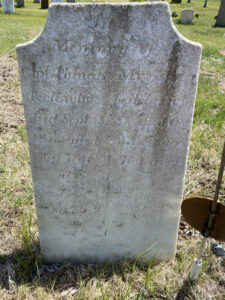
Lathrop’s officers, Lt. Phineas Peck and Ens. John Smith, were also from Pautipaug Society. Both were younger than their captain: Peck was thirty-four and Smith twenty-three years old. Both men were landholders and farmers; Peck was assessed to the value of £63-12s-00d and Smith £42-09s-00d. Smith was the youngest singly-taxed individual in the company. He was also among the youngest married men in the company, he had married Mindwell Armstrong in 1775 at age twenty-one.[29] He represented a class of financially secure young men who had the social and economic capital to be an officer. He married young and was able to sustain a family on his own while advancing his position within Pautipaug.
The enlisted ranks of Norwich’s militia contrasted heavily with their commanding officers. The ages of forty-four men are known.[30] 75 percent were between the ages of sixteen and twenty-nine, and a full 50 percent were aged nineteen to twenty-nine. 60 percent of the company’s enlisted men did not receive a tax assessment, and these men were also absent from the town’s land records. Thus, they did not own their own property and would have either rented or lived in multi-generational homes. There were 901 “dwelling houses” within Norwich in which 1,024 families lived in 1774. The median family size across societies was 6.5 people, and about seven individuals lived in each household. Norwichtown and Chelsea were twice as dense as the outlying societies with about 120 people, fifteen homes, and seventeen families per square mile compared to the latter which had a density between forty and sixty people, four to seven homes, and four to eight families per square mile. The Long Society was an exception, as with sixty-nine homes, it had a similar density to the town’s core.[31]
| Society | Number of Families | Number of Houses | Average Family Size | Average Household Size |
| Norwichtown | 317 | 283 | 6 | 7 |
| West Farms | 133 | 111 | 7 | 8 |
| Newent | 98 | 92 | 7 | 7 |
| New Concord | 146 | 130 | 6 | 7 |
| Long Society | 76 | 69 | 14 | 14 |
| Chelsea | 127 | 104 | 8 | 10 |
| Hanover | 53 | 44 | 6 | 7 |
| Pautipaug | 74 | 68 | 6 | 7 |
| Total | 1024 | 901 | ||
| Median | 112.5 | 98 | 6.5 | 7 |
| Average | 128 | 112.625 | 7.5 | 8.375 |
Table 4: Norwich families and households in 1774.[32]
Without their own property, many young militiamen delayed starting their own families. The marital status of thirty-four men can be determined with accuracy. Of that number, only sixteen were married at the time of the Saratoga campaign, while another eighteen would marry sometime after 1777. Eleven of the twenty-seven men assessed for taxes were married, while the status of ten others is unknown. Conversely, only five men who weren’t assessed for taxes were married by the autumn of 1777.[33] Whether a man married before or after Saratoga, would have been about twenty-six years old at the time of his marriage, indicating that young men waited until they had the financial capacity to support a marriage. Additionally, not everyone owned suitable equipment for military service: in November 1778 Captain Lathrop advertised that any who borrowed “blankets or arms” from State stores needed to return them.[34] Lathrop’s Company was composed mostly of younger, likely unmarried, men who had little to no property of their own who were instead living with family, bosses, or renting.
Of the sixty-six men and officers mustered, twenty-five had served in prior campaigns while another six had likely served, for a total of thirty-one veterans. Thus, between 38 percent and 47 percent of the company had served on active campaign prior to Saratoga. This is likely an underestimate, as the 20th Militia Regiment mustered 255 officers and men for the New York Campaign in 1776 and others had served under Captain Lathrop in Rhode Island in a battalion of state troops the previous winter.[35] It is likely that over half of Lathrop’s company had prior campaign service, which provided a strong nucleus of experienced soldiers.
The identified veterans were motivated soldiers as almost all joined Lathrop’s company before the end of August 1777.[36] The company was mustered for a period of two months to “march to the North.”[37] What then drove the recruitment of others into the company? Threats were one reason, as Captain Waterman of 6th company declared that “he should draft the requisite number of men” unless there were volunteers for service. Ebenezer Metcalf recalled that “enough of Captain Waterman’s Company and also part of Captain Lathrop’s company” had “volunteered to form a company.”[38] The majority of early enlistments were men from 7th Company. Of the first eighteen who enlisted, fourteen were from what would become the future town of Franklin. Community bonds, whether within the company or outside of it, also drove enlistment. Samuel Harris Jr. enlisted “very much against [his] father’s wishes” and did so with James Davis, Bela Cleveland, and a third man named Simeon.[39] These four men likely knew each other and joined together as friends.
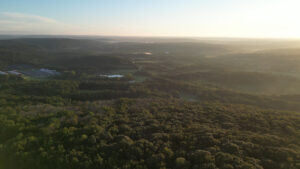
Officers and friends weren’t the only ones who socially pressured recruits—families did as well. The Lathrop and Smith families each had five militiamen within the company and Captain Lathrop’s commanded his nephews Darius Lathrop, Squire Ayer, and Timothy Ayer. Brothers Bela and Phineas Armstrong marched alongside their first cousin Amos. Militia service was conducted among and with friends and family and muster rolls bear out the local nature of defense.
Kinship was important in other ways: Elihu Hyde substituted for his older brother Dr. Nathaniel Hyde.[40] There are two other identified substitutes: Enoch Baker and Christopher Webb. Baker substituted for two men, Rufus Lathrop and Christopher Leffingwell, while Webb served in the place of Daniel Cutler. [41] Of the four draftees who hired substitutes, Leffingwell was the wealthiest, assessed for £1,400, while Rufus Lathrop was assessed £113, Cutler £38, and Hyde £21. Enoch Baker and Christopher Webb were substantially younger than the men they substituted for, and both were unmarried. Of the three substitutes, only Elihu Hyde was taxed, but very modestly on his poll and a small land holding. Financial, familial, and social obligations likely pushed Leffingwell, Lathrop, Cutler, and Hyde to seek out willing substitutes: young men who lacked the same pressures and expectations and could campaign for two months. Cutler, for instance, was a tavern-keeper and likely could not leave his business.[42] In Elihu Hyde’s case, Nathaniel being his older brother likely drove his decision to substitute. There were other substitutes, but their identities have been lost, and most of the company was composed of volunteers and draftees.[43]
Militiamen thus faced enlistment pressure from three primary groups: their officers, their friends, and their family, all playing a role in swelling the ranks. There was no specific tie between enlistment date and whether a man was a volunteer or draftee, except in the case of the five men who were drafted after September 9 and ordered to Stillwater under armed guard.[44] The company was formed during harvest season, which may have factored into in why younger, unmarried men without land were more likely to volunteer, accept terms as substitutes, or be drafted to help minimize the impact on the community’s wider production.
Most of Lathrop’s men did not hail from Norwich’s core. Of those whose residence can be identified, forty-two men, or 64 percent, were from the outlying ecclesiastical societies, while thirteen were from Norwichtown or Chelsea. Nearly one-third came from the future town of Franklin alone.[45] Nor was service spread equally among the outlying societies, as only three men from New Concord served.[46] The burdens of militia service were felt differently in different parts of Norwich as the outlying societies were over-represented.
While not everyone had been under fire, most of the company’s men had endured privations during the campaigns of 1775 and 1776. Norwich’s militia was not composed of inherently poorly trained or disciplined men, but instead of a mixture of younger veterans, many of whom were unmarried and did not own their own property and lived outside of Norwich’s economic and political core. These are the men who would campaign against Burgoyne in 1777.
On Campaign
The Company did not march until September 9. On that day, Norwich officials administered the “Freeman’s and State Oaths.” Nine men swore to that they would support “the rights, liberties, and privileges” of “good and faithfull” subjects of Connecticut.[47] These oaths delayed their march and they only travelled five miles that day to the “Seven Stars” tavern kept by Deacon Barnabus Huntington.[48] After eating supper, they spent their first night on the tavern floor, the first night of many spent in both public and private houses.[49]
Taverns played a key role in logistics and enabled the movement of troops and information throughout the country. In fact, the Seven Stars became an army post office days after the company’s stay.[50] Between Norwich and Stillwater, Lathrop’s company ate most of their meals and billeted at taverns which dotted their route through Connecticut, Massachusetts, and New York. In a few instances they supped at the private homes of supportive citizens. To facilitate meals on the march, a handful of militiamen were sent ahead to prepare food at an appropriate house in time for the company’s arrival. The company either purchased or prepared their victuals, but in one case they were treated by a friendly tavernkeeper in Sheffield, Massachusetts who “took nothing for the sauce + trouble”.[51] While in Colebrook, Connecticut, the company stopped where there was “no house around” and so the men had to cook their own provisions, made difficult as they hadn’t yet divided into messes.[52] In fact, they did not divide into messes until September 19, one day before arriving at Stillwater, which showcases their reliance on taverns, since there had been almost no need to cook their own food.
The company took twelve days to march to camp at Stillwater with a median pace of 15.25 miles per day.[53] While they had a slow start on September 9, they increased their pace every day thereafter. The weather mostly cooperated; rain was only noted on Saturday, September 13 which made for “bad travelling” that day and the next as the mud had not yet dried. Otherwise, it was a “very pleasant” late summer march at a typical speed. Assuming the company marched two miles an hour, they spent between seven and ten hours each day marching. On September 13 and 14, they likely marched longer per day as the travelling was noted as “poor.”[54] This pace left little time for other military activity, and they only exercised on the morning of September 15 before leaving Connecticut’s borders.[55]
Sometime on September 19, either before or after marching to Newtown, New York they could hear the “engagement of the two armies” at Freeman’s Farm.[56] Samuel Harris Jr. and John Barstow gave slightly conflicting accounts of the events of that day in their diaries. Harris recounted that the sound of the guns hurried the men along on their march to camp, and that they only stopped to rest after dark. Barstow wrote they only heard the battle after they reached Newtown. In either case, they entered camp the next day.
At Stillwater, the men witnessed the aftermath of Freeman’s Farm. They “saw the wounded carried to the boats” and Barstow noted that on the night of the 20th, Capt. Daniel Clark of Plainfield, Connecticut, was found on the field and brought back into camp.[57] While alarms on September 22, 23, and 28 kept the men alert, they otherwise settled into a military routine of piquet and fatigue duties. Samuel Harris Jr. wrote of his first piquet that the men were “all in good spirits” and noted the pleasant weather when he was on duty.[58]
There were times when the monotony of camp life was broken. Lathrop’s men only had access to fresh beef and flour, so to augment their diet, Harris and others were given permission to find potatoes but the group instead purchased three pecks of apples. Harris was also sent to Half Moon Point on October 4, alongside a guard of prisoners, to fill wagons with flour for the encamped American forces. Routine was broken in other ways, such as when a man was unfortunately shot in camp on September 24.[59] Most disruptive of all was the influx of prisoners brought into camp who attracted consistent comment.[60]
On October 6, Lathrop’s Company, along with over 1,100 others, were sent on a scouting expedition against the British lines under the command of Henry Dearborn. This party took a circuitous route to the British rear, captured twelve men and women, and ended their day’s march at 10 p.m. still outside of American lines. It was too dark to navigate by compass, so the scouting party set up guards and waited out the night. At daybreak, they began their return march to camp and arrived, exhausted, at ten in the morning on October 7.[61] At noon, an alarm was given in the American camp as the Battle of Bemis Heights began. Elihu Hyde recalled that although they were “much fatigued” they “expected to be called” into the fight, but they were instead “directed to remain behind a breastwork during the battle”.[62]
While the British were defeated at Bemis Heights, work did not stop for the soldiers of Lathrop’s company. Indeed, in the aftermath, Enoch Baker and Samuel Harris were part of the burial detail. Other men from camp were detailed to piquet duty on the 8th and 9th to watch British movements, although Lathrop’s men did not take part.[63] Soon they pursued the British northward. Lathrop’s men were part of Gen. Enoch Poor’s Brigade, which was ordered to flank around the rear of new British positions. While doing so, the British “made a stand” against the Americans and fired at this force with cannons.[64] If Lathrop’s men hadn’t been under any fire on October 7, they certainly were on the 11th.
Lathrop’s company encamped exhausted behind the British in a cornfield. With no provisions, and a long two-days march through woods and over hills behind them, their work continued, and men were sent out foraging parties almost immediately. They brought cows and turnips into their camp, and even skirmished with a party of Hessians. Samuel Harris noted on October 14 that there was “constant firing” between the two sides. These days were crucial, and Lathrop’s men were active in helping hem the British army in. On the 15th, there was a cessation of arms – but the Americans still exercised and went on piquet duty. There was even a sense that “some order to attack” could come at any moment. It was not yet clear to Lathrop’s men the British were defeated.[65]
That changed on October 17 when the company was ordered to strike their camp and march to Saratoga Plain. They witnessed what John Barstow called a “glorious day” for their group of “Rebel Yankeys”: the surrender of Gen. John Burgoyne’s army. Lathrop’s men were paraded facing the Hudson River. As the surrendered British soldiers marched passed, some had “smiling countenances, others with sour,” but the Americans were “happy to see them disarmed and overcome”.[66]
Little was left to do at Stillwater, and so the men were marched south to Albany. Once there, Captain Lathrop received orders to dismiss fourteen men home.[67] Seemingly discontent with not having been chosen, Ezekiel Waterman absconded the very next day and was the company’s only deserter. While Waterman likely felt that his job was done, his hasty retreat was unwarranted, as the company was dismissed a week later after they marched and sailed down the Hudson River.
The men and officers of the company represented a changing Norwich—and a lack of economic opportunity drove many to move away from “Ancient Norwich” to seek prosperity in New York, Vermont, or beyond. Others would take up arms again after 1777, but Lathrop’s Company was no more, it had done its duty. Its short existence provides a window into Connecticut’s militia of the Revolution.
[1] Charles J. Hoadly ed., The Public Records of the Colony of Connecticut, vol. 14 (Hartford, 1887), 485-492. The numbers in the Public Records are six greater than the totals published listing each society in the Norwich Packet. The difference is likely a transcription or printing error at some point. The Norwich Packet’s total is used for consistency. The totals include the black and indigenous population of Norwich
[2] “The Number of Inhabitants in Norwich, January 1st, 1774,” Norwich Packet, April 28, 1774.
[3]. Francis M. Caulkins, History of Norwich (Francis M. Caulkins, 1866), 446, 448, 576; Leonard W. Labaree ed., The Public Records of the State of Connecticut, vol. 6 (Hartford, 1945), 199, 202, 214, 219; Harriet Rosine and David Oat, “Preston and the 9-Mile Square,” The 9-Mile Square, ed. Bill Stanely (Norwich Historical Society, 2005), 110.
[4] Prior to the war, Newent had more than one foot company, but this was reduced to one by 1775. Norwichtown also had three companies prior to the war, but in May 1775 2nd and 11th companies were consolidated because of their individually small sizes. Hoadly, Public Records of the Colony, vol. 15 (Hartford, 1890), 73.
[5] “The Number of Inhabitants in Norwich, January 1st, 1774,” Norwich Packet.
[6] Trumbull, The Public Records of the Colony, vol. 2, 217-18 & 238; Hoadly, ed., The Public Records of the Colony, vol. 8 (Hartford, 1874), 277.
[7] John K. Robertson, “Decoding the Connecticut Militia”, Journal of the American Revolution, July 27, 2016, allthingsliberty.com/2016/07/connecticut-militia-1739-1783/.
[8] These volunteer companies were attached to their parent regiment and did not operate outside of the official militia establishment. Captain Leffingwell did attempt to gain independent control of the Light Infantry but was denied.
[9] Lucius A. Barbour, Frederick E. Camp, Stephen R. Smith, and George M. White, eds., Record of Service of Connecticut Men in the I.-War of the Revolution. II.-War of 1812. III.-Mexican War (Hartford, 1889), 620; Clare Matthew McCall, Captain John McCall, 1726-1812: His Ancestors and His Descendants (New England Historic Genealogical Society, 1985), 193.
[10] Barbour, Record of Service, 479.
[11] Charles J. Hoadly, ed., Public Records of the State of Connecticut vol.1 (Hartford, 1894), 92.
[12] Hoadly, Public Records of the Colony, 14:114-115.
[13] Acts and Laws of His Majesties Colony of Connecticut in New England: Passed by the General Assembly May 1716 to May 1749 (Hartford, 1919), 496.
[14] Bruce C. Daniels, “Large Town Power Structures in Eighteenth Century Connecticut” (PhD Diss., University of Connecticut, 1970), 101-147.
[15] E.B. Huntington, A Genealogical Memoir of the Lo-Lathrop Family in this Country (Ridgefield, 1884), 80-81.
[16] I applied the age and gender ratio for the entirety of Norwich, based on the 1774 census, to the society’s population.
[17] “Advertisement.” Norwich Packet, December 6, 1781.
[18] Norwich “List of Polls & Ratable Estate”, 1777, Norwich (Conn.) Collection, 1681-1822, Box 1, Folder 16, Ms 73730, Connecticut Museum of Culture and History (CMCH), Hartford, CT.
[19] Deed, Norwich Land Records, Book 20, Page 177, Norwich City Hall, Norwich, CT.
[20] “A List of the Troop of Horse in the Third Regiment in the Colony of Connecticut”, October 5th, 1758, Connecticut Archives, Connecticut Militia Second Series, volume 1, document 89; Report on Commissioned Officers, October 1774, Connecticut Archives, Connecticut Militia Second Series, volume 10, document 1900b; “To Jacob Hazen”, February 5, 1775, Connecticut Archives, Connecticut Militia Second Series, volume 11, document 2145a.
[21] Information for this table drawn from: Vital Records of Norwich 1659-1848: Part I (Society of Colonial Wars in the State of Connecticut: 1913), Vital Records of Norwich 1659-1848: Part II (Society of Colonial Wars in the State of Connecticut: 1913), Norwich “List of Polls & Ratable Estate”, 1775 and 1777, Box 1, Folder 14, Ms 73730, CMCH; Hoadley, The Public Records of the Colony of Connecticut, vol. 14 (Hartford, 1887); Hoadley, The Public Records of the Colony of Connecticut, vol. 15 (Hartford, 1890).
[22] “The Last Will and Testament of Mr. of Timothy Ayer”, November 8, 1771, Norwich Probate District, Connecticut, U.S. Wills and Probate Records, 1609-1999, Ancestry.
[23] Charles J. Hoadly ed., The Public Records of the Colony of Connecticut, vol. 9 (Hartford, 1876), 170.
[24] Jolene R. Mullen, ed., Connecticut Town Meeting Records During the American Revolution: Volume II (Heritage Books, 2011), 127-129.
[25] The man chosen was Colonel Zabdiel Rogers; Mullen, Connecticut Town Meeting Records, 134.
[26] “Mr. Trumbull, Brethren and Fello-Soldiers.” Norwich Packet, May 5, 1777.
[27] Two others were part of joint assessments whose value fell between Porter and Lathrop.
[28] Ebenezer Lathrop to Moses Brown, Deed, June 3 1777, Norwich Book of Deeds, vol. 22, 226-228, Norwich City Hall; Ebenezer Lathrop to Elisha Lathrop 3rd, Deed, April 23 1778, Norwich Book of Deeds, vol. 23, 209-210, Norwich City Hall.
[29] Norwich “List of Polls & Ratable Estate”, 1777, CMCH; Vital Records of Norwich Part I, 541.
[30] Vital Records of Norwich, 1659-1848 Part I and Part II (1913).
[31] “The Number of Inhabitants in Norwich, January 1st, 1774,” Norwich Packet.
[32] Ibid.
[33] Norwich “List of Polls & Ratable Estate”, 1775, CMCH; Norwich “List of Polls & Ratable Estate”, 1777, CMCH; Vital Records of Norwich, 1659-1848 Part I and Part II (1913).
[34] “Notice is hereby given.” Norwich Packet, November 9, 1778.
[35] Return of the 20th Regiment of Foot, October 4 1776, U.S., Revolutionary War Rolls, 1775-1783 (Lehi, Utah): Ancestry.com Operations, Inc., 2007; Pension Applications: Joshua Smith (S. 22625), National Archives and Records Administration, Washington, DC (NARA); Charles J. Hoadley, ed. Public Records of the State of Connecticut, Vol. 1 (Hartford, 1894), 69.
[36] Barbour, Record of Service, 507.
[37] Pension Applications: John Barstow (S. 12039), NARA. John Barstow included his diary from the Saratoga Campaign with his pension application.
[38] Pension Applications: Ebenezer Metcalf (S. 18125), NARA.
[39] Samuel Harris, Jr., The Journal of Samuel Harris Jr. of Boston. Written while in the Army in 1777, MS, Harvard University Library, Sparks 25, 137a.
[40] Pension Applications: Elihu Hyde (W. 25814), NARA.
[41] Pension Applications: Elihu Hyde (W. 25814); Enoch Baker (S. 17250), NARA.
[42] Norwich “List of Polls & Ratable Estate”, 1775, CMCH
[43] Hoadley, Public Records of the State, vol. 1, 395.
[44] Ibid.
[45] Norwich “List of Polls & Ratable Estate”, 1775, CMCH; Norwich “List of Polls & Ratable Estate”, 1777, CMCH.
[46] Ibid; Vital Records of Norwich, 1659-1848 Part I and Part II (1913).
[47] Hoadley, Public Records of the State, vol. 1, 227; Barbour, Record of Service, 407; “List of Polls & Ratable Estate”, 1777.
[48] Caulkins, History of Norwich, 184.
[49] Harris, Journal, 137a.
[50] “Advertisement.” Norwich Packet, September 22, 1777.
[51] Pension Application: John Barstow (S. 12039), NARA.
[52] Harris, Journal, 138a.
[53] Ibid; Pension Application: John Barstow (S. 12039), NARA.
[54] Harris, Journal, 137b; Matthew H. Spring, With Zeal and Bayonets Only: The British Army on Campaign in North America, 1775-1783 (University of Oklahoma Press, 2008), Chap. 4, Kindle.
[55] Pension Application: John Barstow (S. 12039), NARA.
[56] Ibid.
[57] Ibid.
[58] Harris, Journal, 139a.
[59] Pension Application: John Barstow (S. 12039).
[60] Harris, Journal, 139b.
[61] Ibid.
[62] Pension Applications: Bela Armstrong (S. 22625); Elihu Hyde (W. 25814).
[63] Pension Applications: Enoch Baker (S. 17250), John Bartstow (S. 12039), NARA; Harris, Journal, 140b.
[64] Pension Applications: John Barstow (S. 12039); Harris, Journal, 141a.
[65] Harris, Journal, 141b.
[66] Pension Applications: John Barstow (S. 12039); Harris, Journal, 142a.
[67] Harris, Journal, 142b.
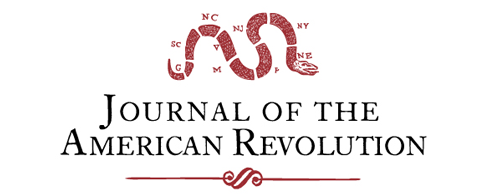



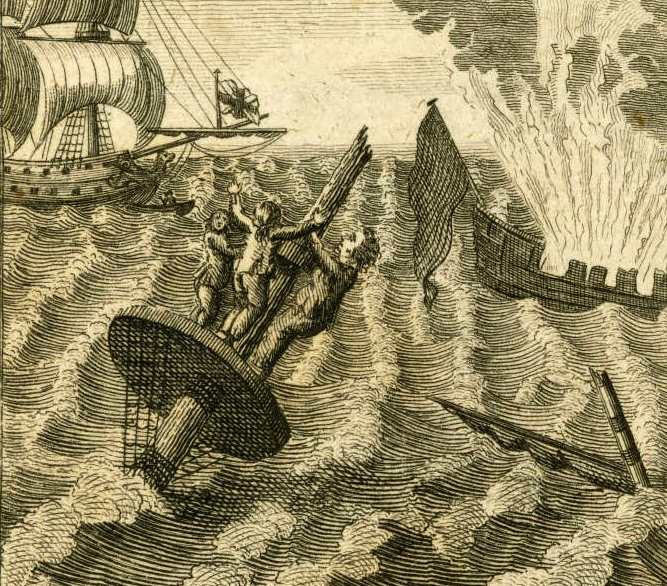
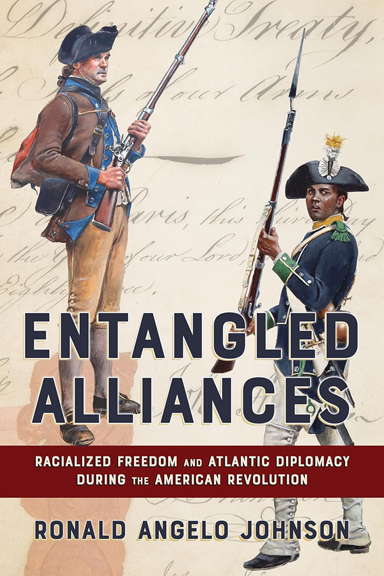
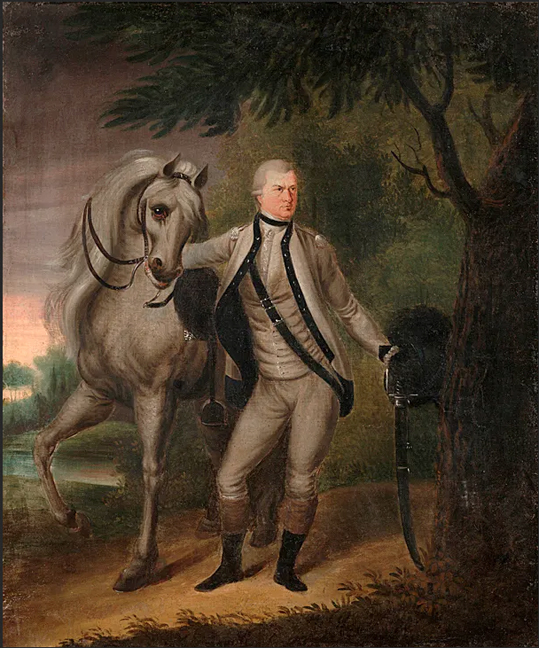

3 Comments
Hi, great recount of the movements of Lathrop’s Norwich militia regiment. I love the tables you made with data about the parishes, etc. Excellent! Can you be sure (or make sure) that we are talking about Eben Lathrop Jr. or Sr. because it matters for my own research as Eb. Lathrop Sr. (1701-1783) married (a second time–later in life) to Hannah Perkins Huntington Lynde (Lathrop). LMK, thanks. You can privately email me at ma***********@gm***.com.
Hi Maggie, thank you for your comment. Yes, we can be sure this was Ebenezer Lathrop Jr. based on a few factors, the most important and clearest is that on the tax lists and report of his election he is referred to as “Ebenezer Lathrop Jr.” The election document states “I lead them to the Choice of a Captain when Quarter Master Ebenezer Lathrop Junr was chosen to sd. office by a majority of voters present.”1
There are other supporting pieces of evidence as well, such as each man’s age. The age of militia service was about 16 to 50. Lathrop Sr. was 74 in 1775, far older than other militia men and active officers. He still was called “Captain” after his retirement from the office as a sign of respect. In 1777, he would have been 76, and I don’t think a man of that age would have done well with the physical stress of campaigning. Meanwhile, Lathrop Jr. was more than thirty years younger than his uncle and would have been able to endure the exertions of march, reconnaissance, and battle.
Additionally, we want to look at their commission dates. Ebenezer Lathrop Sr had served as an officer in the 1st Company (in 1st Society) during the 1740s and 1750s. He was first commissioned as an Ensign in 1740, a Lieutenant in 1742, and finally as Captain in 1745.2 If I didn’t miss any of the other officers commissioned in 1st Company, he had a fairly long tenure as Captain until the late 1750s.
On the flip side, Ebenezer Lathrop Jr. was commissioned for the first time in 1774 as a Quarter Master in the troop of Horse (which typically recruited from the north-western societies), and then as a Captain in 1775 (in 7th company). In the late 1750s, Jr. shows up as a private on a list of men in the Norwich Troop of Horse.
A final piece of supporting evidence is location. As the militia companies were more or less related to Ecclesiastical Society, officers lived within the bounds of their company and thus society. Lathrop Sr. was taxed in 1st Society, while Lathrop Jr. lived and was taxed in 8th Society – each reflective of the companies both men led at various points. It would have been irregular for an officer to be elected to lead a company at a distance from where they actually lived.
Sources:
1: “To Jacob Hazen”, February 5, 1775, Connecticut Archives, Connecticut Militia Second Series, volume 11, document 2145b.
2: Charles J. Hoadly ed., The Public Records of the Colony of Connecticut, vol. 8, pages 335 and 448; The Public Records of the Colony of Connecticut, vol. 9, page 171.
Excellent scholarship. And very interesting what all these men did for this long war and their camp life observations, marching, etc. Connecticut men were heartily represented. Thank you SO much for digging around about Eben Lathrop Jr.’s uncle (Capt. Eben Lathrop) from Norwich. Can be very challenging, and important, to get the names right!